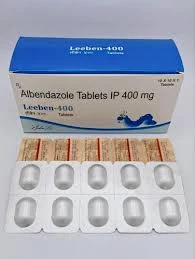- Afrikaans
- Albanian
- Amharic
- Arabic
- Armenian
- Azerbaijani
- Basque
- Belarusian
- Bengali
- Bosnian
- Bulgarian
- Catalan
- Cebuano
- Corsican
- Croatian
- Czech
- Danish
- Dutch
- English
- Esperanto
- Estonian
- Finnish
- French
- Frisian
- Galician
- Georgian
- German
- Greek
- Gujarati
- Haitian Creole
- hausa
- hawaiian
- Hebrew
- Hindi
- Miao
- Hungarian
- Icelandic
- igbo
- Indonesian
- irish
- Italian
- Japanese
- Javanese
- Kannada
- kazakh
- Khmer
- Rwandese
- Korean
- Kurdish
- Kyrgyz
- Lao
- Latin
- Latvian
- Lithuanian
- Luxembourgish
- Macedonian
- Malgashi
- Malay
- Malayalam
- Maltese
- Maori
- Marathi
- Mongolian
- Myanmar
- Nepali
- Norwegian
- Norwegian
- Occitan
- Pashto
- Persian
- Polish
- Portuguese
- Punjabi
- Romanian
- Russian
- Samoan
- Scottish Gaelic
- Serbian
- Sesotho
- Shona
- Sindhi
- Sinhala
- Slovak
- Slovenian
- Somali
- Spanish
- Sundanese
- Swahili
- Swedish
- Tagalog
- Tajik
- Tamil
- Tatar
- Telugu
- Thai
- Turkish
- Turkmen
- Ukrainian
- Urdu
- Uighur
- Uzbek
- Vietnamese
- Welsh
- Bantu
- Yiddish
- Yoruba
- Zulu
Dec . 11, 2024 11:13 Back to list
what kills liver flukes in humans
What Kills Liver Flukes in Humans?
Liver flukes, particularly the species *Fasciola hepatica* and *Clonorchis sinensis*, are parasitic flatworms that can infect the liver of mammals, including humans. These parasites are notorious for causing various health issues, including liver damage, biliary obstruction, and, in severe cases, liver cancer. Understanding how to eliminate liver flukes from the human body is crucial for effective treatment and prevention of their associated diseases.
Life Cycle and Transmission
Before delving into treatment options, it is important to understand the life cycle of liver flukes. These parasites typically reside in the liver and bile ducts of definitive hosts, which include cattle, sheep, and humans. The life cycle begins when eggs are excreted in the feces of an infected host and then hatch in water, releasing larvae that infect freshwater snails, the intermediate hosts. Inside the snail, the larvae undergo several developmental stages before being released back into the water as free-swimming cercariae. These cercariae then attach to aquatic plants, encysting as metacercariae. Humans and other mammals become infected when they ingest these encysted larvae, often through the consumption of undercooked or contaminated freshwater plants such as watercress.
Symptoms and Diagnosis
Infection with liver flukes can lead to a range of symptoms, including abdominal pain, jaundice, fever, and weight loss. Chronic infections may result in more severe complications, including cholangitis, biliary fibrosis, and hepatic cirrhosis. Diagnosis typically involves blood tests and imaging studies, such as ultrasound or MRI, to visualize the presence of flukes in the liver or bile ducts, as well as stool examination for eggs.
Treatment Options
what kills liver flukes in humans

The primary approach to treating liver fluke infections is the use of anthelmintic medications. Praziquantel is one of the most common drugs used to treat infections caused by various trematodes, including liver flukes. This medication works by causing spasms and paralysis of the worms' muscles, leading to their eventual detachment from the host tissues and subsequent elimination from the body through the digestive tract.
Triclabendazole is another effective treatment specifically targeting *Fasciola hepatica*. It disrupts the flukes' energy metabolism and prevents them from completing their life cycle within the host. This drug is particularly important in chronic infections, as it clears the infection rapidly and alleviates symptoms.
Prevention and Control
While treatment is essential for those already infected, prevention plays a critical role in controlling liver fluke infections. Avoiding contaminated food and water is paramount. Individuals should be cautious about consuming raw or undercooked freshwater plants, as these are potential sources of metacercariae. Proper cooking methods, such as boiling or steaming, can effectively kill the parasites.
Improving sanitation and controlling the population of freshwater snails can also reduce the risk of infection. Public health education efforts centered on hygiene practices, safe food handling, and awareness about the risks associated with consuming raw aquatic plants can help in preventing the spread of liver flukes.
Conclusion
Liver fluke infections pose a significant health risk, especially in regions where the consumption of contaminated freshwater plants is common. Effective treatment options, including the use of praziquantel and triclabendazole, can eradicate these parasites and mitigate their harmful effects on the liver. However, prevention remains the most effective strategy to protect against liver fluke infections. By promoting safe dietary practices and improving sanitation, we can significantly decrease the incidence of these parasites and safeguard public health. Ongoing research and monitoring are essential to develop new therapeutic options and enhance educational campaigns aimed at preventing liver fluke infections globally.
-
Guide to Oxytetracycline Injection
NewsMar.27,2025
-
Guide to Colistin Sulphate
NewsMar.27,2025
-
Gentamicin Sulfate: Uses, Price, And Key Information
NewsMar.27,2025
-
Enrofloxacin Injection: Uses, Price, And Supplier Information
NewsMar.27,2025
-
Dexamethasone Sodium Phosphate Injection: Uses, Price, And Key Information
NewsMar.27,2025
-
Albendazole Tablet: Uses, Dosage, Cost, And Key Information
NewsMar.27,2025













